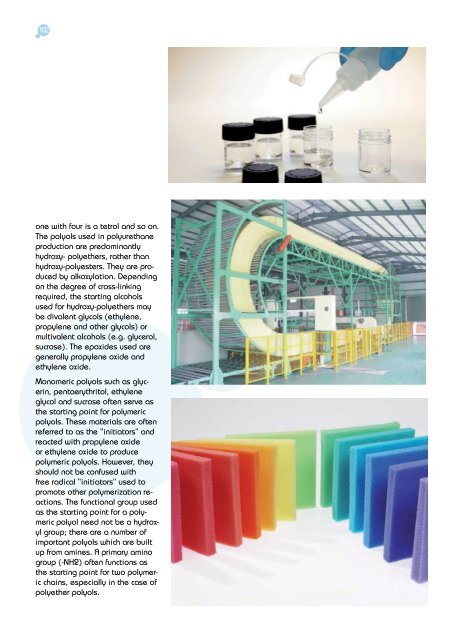SleepTech July - August 2018
SleepTech July - August 2018
SleepTech July - August 2018
You also want an ePaper? Increase the reach of your titles
YUMPU automatically turns print PDFs into web optimized ePapers that Google loves.
102<br />
one with four is a tetrol and so on.<br />
The polyols used in polyurethane<br />
production are predominantly<br />
hydroxy- polyethers, rather than<br />
hydroxy-polyesters. They are produced<br />
by alkoxylation. Depending<br />
on the degree of cross-linking<br />
required, the starting alcohols<br />
used for hydroxy-polyethers may<br />
be divalent glycols (ethylene,<br />
propylene and other glycols) or<br />
multivalent alcohols (e.g. glycerol,<br />
sucrose). The epoxides used are<br />
generally propylene oxide and<br />
ethylene oxide.<br />
Monomeric polyols such as glycerin,<br />
pentaerythritol, ethylene<br />
glycol and sucrose often serve as<br />
the starting point for polymeric<br />
polyols. These materials are often<br />
referred to as the “initiators” and<br />
reacted with propylene oxide<br />
or ethylene oxide to produce<br />
polymeric polyols. However, they<br />
should not be confused with<br />
free radical “initiators” used to<br />
promote other polymerization reactions.<br />
The functional group used<br />
as the starting point for a polymeric<br />
polyol need not be a hydroxyl<br />
group; there are a number of<br />
important polyols which are built<br />
up from amines. A primary amino<br />
group (-NH2) often functions as<br />
the starting point for two polymeric<br />
chains, especially in the case of<br />
polyether polyols.

















